Mediterranean Cities in Danger - Zagreb Urban Planning Conference
May 3, 2023 - Mediterranean cities are in danger of droughts, fires, heat waves, and water shortages, so the cooperation of all countries in the area is needed to combat the consequences of climate change, the Deputy Secretary General of the Union for the Mediterranean (UfM) warned.
"For the inhabitants of the Mediterranean basin, this is alarming. In addition to the fact that the region is susceptible to climate change, it also has one of the fastest rates of urbanization in the world," said Erdal Sabri Ergen, head of transport and urban development at UfM, reported Poslovni (Hina).
Turkish diplomat Sabri Ergen, who will participate in the 3rd Ministerial Conference of the Union for the Mediterranean on sustainable urban development in Zagreb on Thursday, announced the event with a text titled "Green cities will save lives."
"Cities in the Mediterranean region are already dangerously exposed to the impacts of climate change, including water shortages, droughts, forest fires, and heat waves. In addition, they face increasing threats from rising sea levels, coastal flooding, and storms," he stated.
Zagreb to host an urban planning conference
In recent weeks, droughts and fires have raged in Spain, Portugal, and France, where temperatures are at July levels. The Mediterranean Sea and its coasts are warming 20 percent faster than the world average, so it is the second most threatened area after the Arctic in the north, according to data from the Union for the Mediterranean (UfM).
"That's why we call for more energetic international cooperation to encourage sustainable development, where cities must be at the center of action," added Sabri Ergen.
The Union for the Mediterranean, an intergovernmental organization based in Barcelona, includes all the countries of the European Union and the countries of the southern and eastern Mediterranean, a total of 43 of them.
The Zagreb meeting of the ministers in charge of urban planning is the third such meeting after those held in Cairo in 2017 and Strasbourg in 2011. Five years ago, the Union for the Mediterranean presented its urban agenda, and to fulfill its goals, it launched an action plan. It is the framework that all countries should adhere to in implementing policies to reduce urban and underwater pollution, build energy-efficient homes, provide water for citizens, preserve historical landmarks, and implement sustainable tourism.
"Looking forward, the UfM countries have embarked on implementing an ambitious action plan for the further progress of sustainable urban development in the region. Measuring progress will be key, and as part of the 'Strategic Action Plan for Urban Development 2040', we have established indicators for monitoring and reporting on the progress achieved," said Sabri Ergen.
Urban areas cover only 2 percent of the world's land, but they produce 70 percent of global greenhouse gas emissions and use 78 percent of the world's energy.
"Our cities leave a huge mark on the environment," emphasized Sabri Ergen.
He notes that there are more benefits to sustainable urban development. The health organization ISGlobal estimates that cities in Europe could prevent up to 43,000 premature deaths each year if they followed the World Health Organization (WHO) recommendations on access to green spaces.
"Through our recent collaboration with the WHO, we are promoting healthier and more pleasant cities that prioritize the well-being of their residents," said Sabri Ergen. "The effect of this partnership will be highlighted during the ministerial conference in Zagreb on Thursday," he added.
The conference should be attended by Croatian Prime Minister Andrej Plenković, European Commissioner for EU Funds Elisa Ferreira, and UfM Secretary General Nasser Kamel, as well as Croatian Minister of Spatial Planning Branko Bačić.
Sabri Ergan says that one of the key areas of discussion will be the lack of energy efficiency in buildings.
"Today, buildings and structures generate 37 percent of energy-related greenhouse gas emissions. This takes us away from achieving the ambitious goal of complete decarbonization by 2050 because by then, global energy consumption in the construction sector will double, and the need for cooling in buildings will triple," he warned.
For more, make sure to check out our dedicated News section.
EU Climate Pact Presented: Mediterranean Still Under Greatest Threat From Plastics
July 5th, 2021 - At a presentation of the European Climate Pact, a new European Commission initiative, experts warned earlier this week that the Mediterranean Sea was still the area in the world under the greatest threat from plastic waste and that the enormous consumption of bottled water was an increasing problem.
According to the World Wildlife Fund, 55% of the world's plastic waste is accumulated in the Mediterranean Sea. With poor waste management and mass tourism without adequate infrastructure, high consumption of plastic packaging, especially bottled water, is an increasing problem.
The Mediterranean is the region in the world under the greatest threat from plastic waste. We are literally suffocating in plastics. In Croatia, huge quantities of bottled water are bought. Don't buy water in plastic packaging. Croatia is a country rich in water sources, said Nataša Kalauz of WWF Adria at the online presentation of the European Climate Pact in Zagreb.
The European Climate Pact is an initiative launched by the European Commission in 27 EU member states to raise awareness of the problem of climate change and encourage joint action. WWF Adria is the project coordinator for Croatia and Slovenia.
Julije Domac, the Croatian president's special advisor on energy and climate and European Climate Pact ambassador, said that "unless the future is green, we wouldn't have it."
He also said that Croatia, as a country rich in renewable resources, could recognize an opportunity in that, not only for the production of energy for its own needs but also for export.
Perhaps a fifth of energy production comes from renewable resources globally, and in about twenty years, it should reach four-fifths. That is an opportunity for Croatia, said Domac.
The director of the Croatian Business Council for Sustainable Development, Mirjana Matešić, cited the unsustainability of the current tourism model as one of the major problems Croatia is facing at the moment, referring to the devastation and degradation of space for tourism as well as corruption in spatial planning in mass tourism.
Dunja Mazzocco Drvar, head of the Directorate for Climate Activities at the Ministry of Economy and Sustainable Development, said that on 2 June, the Ministry adopted a new low-carbon strategy.
We are waiting for new European laws announced for mid-July, so in about two weeks, we will have new laws that will reflect the latest European ambition to reduce greenhouse gas emissions by 55% by 2030, said Mazzocco Drvar.
The results of a study recently conducted among young people in the EU were also mentioned at the panel discussion, and they show that even though 78% of young people are concerned about climate change, most of them, 90%, are not ready to give up various amenities to reduce their harmful impact on the environment.
Mazzocco Drvar stressed that all citizens had to be educated about sustainable living and energy use.
The CountUsIn platform (https://www.count-us-in.org/en-gb/) was also presented, and citizens can use it to choose a way to reduce their harmful impact on the environment or to have a positive effect on the climate crisis.
The online panel discussion was the first event within the European Climate Pact project, and WWF has announced that new panels, forums, and other forms of education and interaction with citizens will take place soon to raise awareness of the climate change problem and support citizens in their attempts to contribute to positive change.
For more follow TCN's dedicated page.
Croatia to Join MED 7 Alliance Says Minister of Foreign Affairs
May 13, 2021 - After his visit to Spain, Croatian Minister of Foreign Affairs, Gordan Grlic Radman announced the possibility of Croatia joining the Med 7 alliance.
Croatia might be joining the alliance of Mediterranean and southern European countries know as MED 7. Minister of Foreign Affairs Gordan Grlic Radman returned from a two-day visit to Madrid where he discussed this option with his Spanish colleague Minister Arancha Gónzalez Laya. The official announcement is expected in autumn at the yearly meeting of the alliance on Crete.
MEDT 7 or EuroMed 7 is an alliance of 7 countries of the Mediterranean region. Member countries are Spain, Greece, Italy, France, Portugal, Malta, and Cyprus. Portugal is the only country within the alliance that is not a Mediterranean country. However, it is a part of the wider region. MED 7 was established in 2013 following the initiative by Spain and Cyprus. The idea behind the group is to be able to form common stances on issues of interest. All countries in the group are EU countries.
Croatia to Fit in Well
According to Minister Grlic Radman, as reported by tportal.hr, Croatia fits well into the group and satisfies all necessary prerequisites for joining the alliance. He also expressed his belief in the need for Croatia to participate in discussions about the issues facing the Mediterranean region. Minister noted how the group will gain much from Croatian participation as well. In order to join the alliance, Croatia will have to approach each of the member countries individually.
Some of the main issues that the alliance might deal with in the near future are climate change, illegal immigration, pollution, and cooperation with non-European countries of the Mediterranean region.
It makes sense for Croatia to join such an alliance. After all, it does make up for most of the eastern Adriatic coastline. With the political power balance in the EU changing with Brexit finally coming to its end stage, it will be interesting to see whether Mediterranean countries can take a more important role in shaping EU policies.
For more about diplomacy in Croatia, follow TCN's dedicated page.
Forbes Ranked Mljet Among Five Undiscovered Mediterranean Islands
February 8, 2021 – Another recognition to the Croatian islands as Forbes ranked Mljet among the top five Mediterranean undiscovered islands.
As reported by Ina Rodin, director of the Croatian National Tourist Board in the USA, the renowned American magazine Forbes ranked the Croatian island of Mljet among the top five undiscovered Mediterranean islands for travelers who like to explore destinations "off the beaten track."
The article states that many beautiful destinations on the Mediterranean coast are still unexplored. The author of the article brings a list of five idyllic islands, perfect for those looking to escape from the crowds and mass tourism.
The island of Mljet is presented as a perfect place for all visitors looking for an active vacation, whether it is exploring the Mljet National Park, swimming, kayaking, or numerous hiking and biking trails on the island. On the other hand, all history and culture lovers can explore Polače, one of the oldest settlements on the island, known for its Roman palace dating back to the Roman Empire.
Along with Mljet, the list includes the Greek Syros, the Spanish island of Tabarca, the Kerkennah Islands off the coast of Tunisia, and the island of Kekova in Turkey.
"Announcements about Croatia and Croatian destinations in the most popular American media such as Forbes, The New York Times, The Washington Post confirmed the popularity and position of our country as a desirable tourist destination on the American market. Although the greater realization of tourist traffic from distant markets is currently difficult, our presence and visibility in the American media are important for future trends and travel," said the Croatian National Tourist Board director Kristjan Staničić.
Let's add that the world's leading brand of tourist guides Lonely Planet in its article provides an overview of four beautiful car routes in the southeastern part of Europe, and among the selected routes was a ride from Dubrovnik to Montenegro, which according to the author simply "takes your breath away."
For the latest travel info, bookmark our main travel info article, which is updated daily.
Read the Croatian Travel Update in your language - now available in 24 languages.
Interview: Meet Najfiniji Sapuni Itd., All-Natural Croatian Cosmetics
October 8, 2020 - Najfiniji sapuni itd. (Finest Soaps, etc.) is a line of all-natural cosmetic products, owned by two Croatian single moms, Maja Pejcic and Jasminka Grbelja. With a breath of the Mediterranean and a lot of will, they have become noticed in Croatia.
So, “Najfiniji sapuni / Finest soaps, etc.” Not at all mundane or standard. How did you come up with the name?
Najfiniji sapuni started with solid soaps. After that, we decided to start making face creams, lotions, balms… In essence, the name comes from a combination of what we are - the finest cosmetics for body care and growth. And now, we are going further with our product range.
What is in your product range? What are the ingredients used?
Najfiniji sapuni now has a nice range of body care products. Face creams, lip balms, butter and body lotions, part creams, hydrolats, solid and liquid soaps, shower gels, salt and cream peels, hand creams, and soon micellar waters and facial cleansing foams. We decided to go with simple basic raw materials: coconut oil, olive oil, shea butter and butter, Mediterranean essential oils. We try to weave all the best from nature into our body care products (following all legal regulations and norms, of course). We want our consumers to understand what they are reading when they check out the ingredients on the bottle. That the raw materials are recognizable - we go to a lot of ingredients to win over the audience with a lot of text on the packaging - we go to quality and comprehensibility.
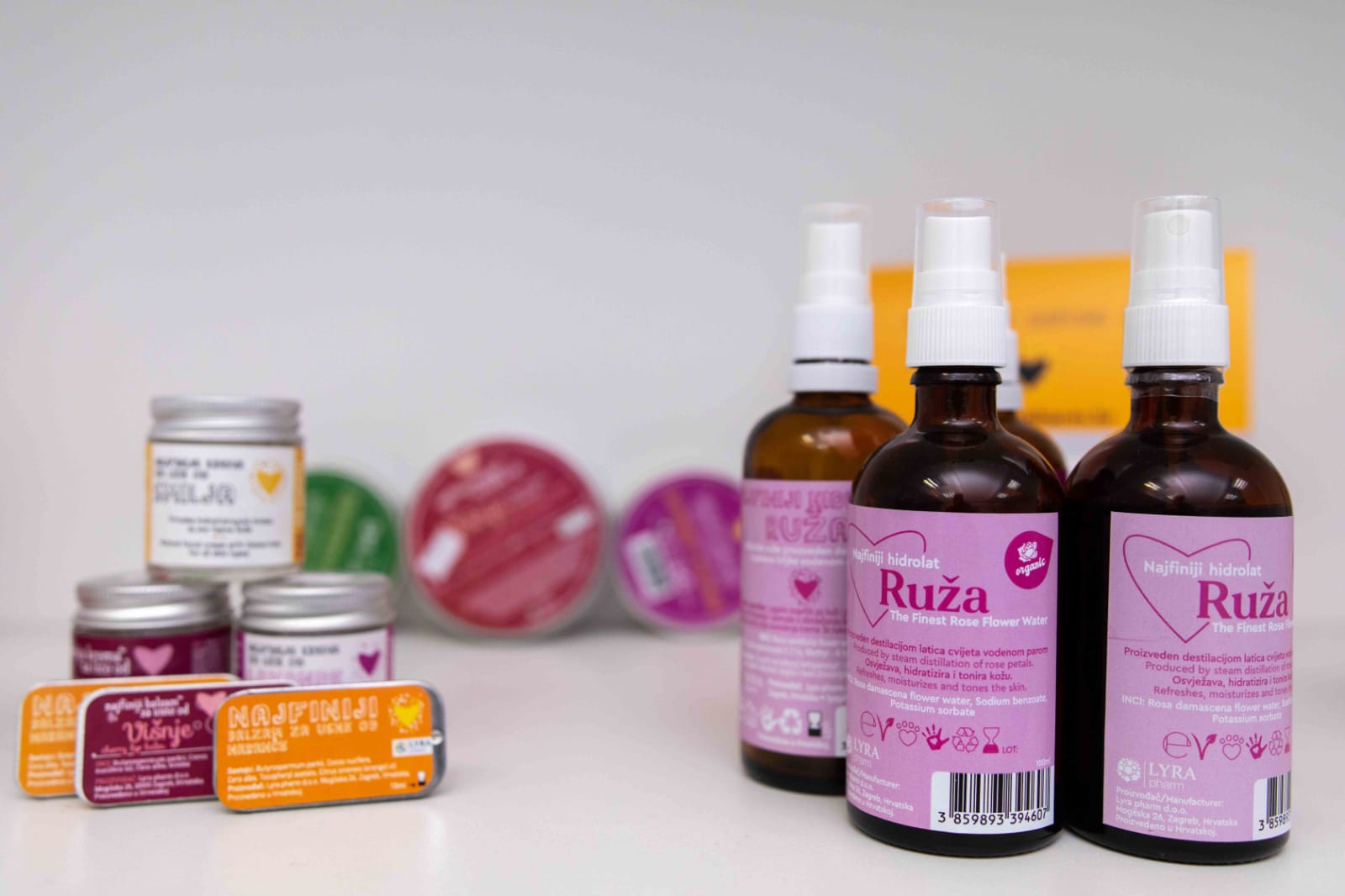
© Matej Paluh
I believe that you like every product, but which one are you especially proud of and why?
All our products are loved and created with a lot of love. But we have our pride.
Maja: I am very proud of the solid soaps - they were basically made according to my grandmother's recipe. So here’s my significant sentimental connection. And deodorant creams.
Jasminka: Deodorant cream! My firstborn in the Finest Soaps.
When moving into each new product design, the guiding thread was: what would we want on our skin? What are the ingredients that are really good and what we don't like in the products? How do we use that wonderful Mediterranean of ours and its essences? So there was a lot of imagination, love, and effort to create the product.

Najfiniji sapuni © Matej Paluh
What hindered you the most in starting a business? What motivated you?
Like everyone else, it is the bureaucracy. Collecting documentation, finding regulations, applicable regulations, reading the law, fighting various offices. These are things you need to learn on the go. No one prepares you for such a struggle; no one prepares you to understand systems and norms.
And what motivated us? Well, of course, the desire to put everything on a sound footing and start with the finest story. When you want something strong enough, then you have a powerful motive to fight for it.
The word "Mediterranean" runs through the whole story - how did it find its place in your laboratory?
It was a logical sequence. Najfiniji sapuni made our first steps in Baška on Krk. All these fragrant herbs, all these benefits were at hand, so why not use them and create something useful, that is, in body care? Thus, olive oil, essential oils of immortelle, lavender, mint, rosemary, sage, immortelle, lavender hydrolats, orange, and cherry found a place in our laboratory. The Mediterranean provides a great treasure.
The media often tells the fact that you are single mothers. When combined with the context of what you have achieved, is it a compliment to you, or do you feel it is not necessary to mention it?
In one segment, it is important for the very reason that many think that it is impossible with such a status to be equally committed to your home and work. The proof is there - it can be done. A lot has been achieved, but the fact is that it was not at all easy to reconcile everything. We don't consider it a handicap, but maybe even a benefit, because we are used to holding all four walls of the house by ourselves. Let that struggle be something to us every day, and we may have found it easier to cope with all the obstacles than others. We know nothing but persistence and strength.
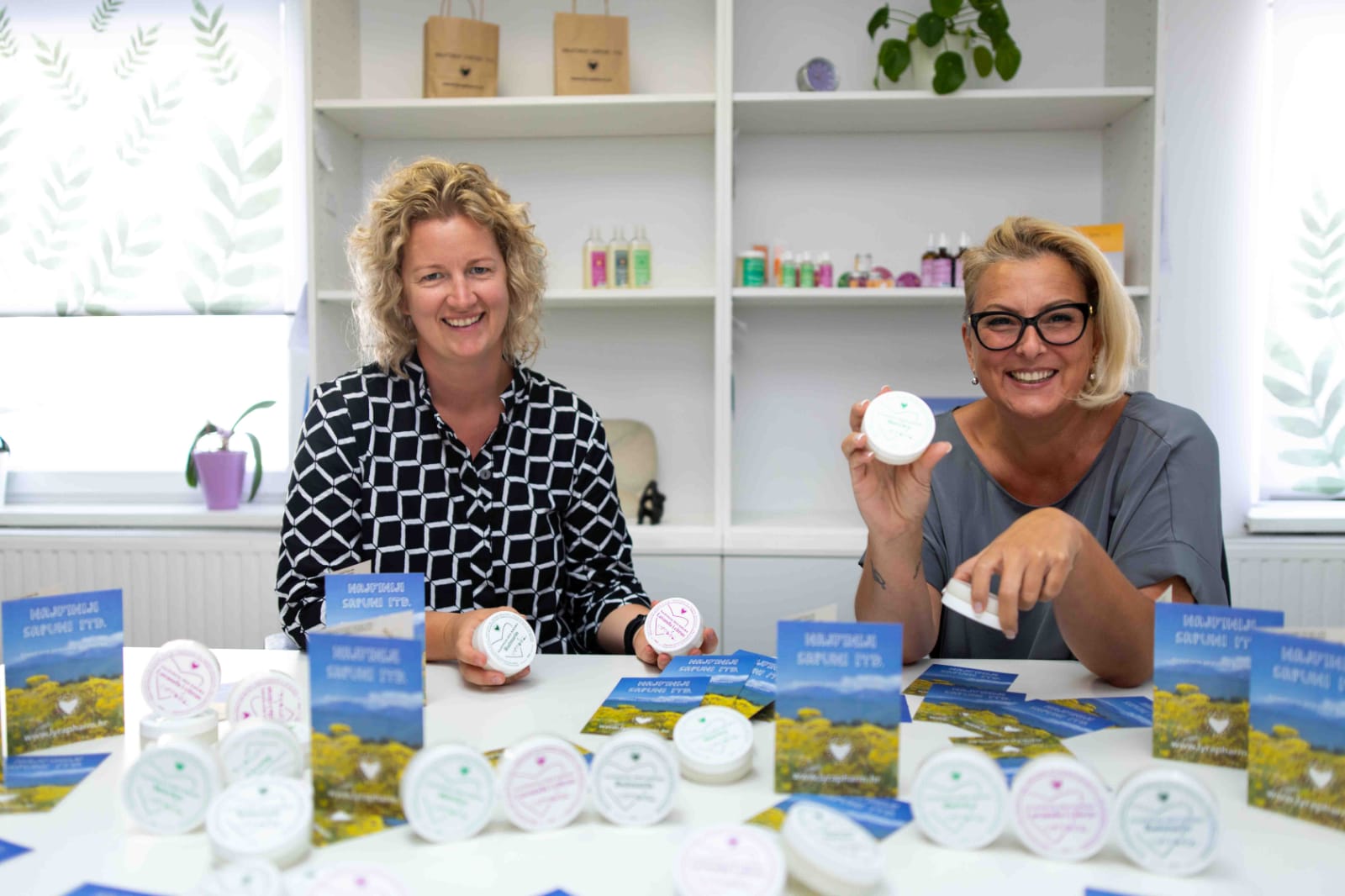
Najfiniji sapuni © Matej Paluh
Speaking of kids, are they faithful helpers, or do they still not know what mom is concocting in her dish?
Of course! Little Iva is a master at mixing with a spoon in her dish. She is a real lady who enjoys applying lip balms and hand creams. And Antonio is a teenager who uses solid soap and faces cream. They are faithful helpers because they are with us. They know what we are doing, but it is our job for them. Of course, with us, they learn to use the natural, to protect the environment - and when they grow up, who knows, maybe they will follow in our footsteps.
Where can potential customers find you, and what would you recommend from your product range?
All fans of our cosmetics can find us all over Croatia. We are on the shelves of specialized stores, souvenir shops, and we are also in the offer of larger retail chains. To make it easier, we have created an overview list of cities and shops under the contacts section on our website. For all those who do not have a point of sale in their vicinity, they can order directly from us through our Najfiniji sapuni webshop.
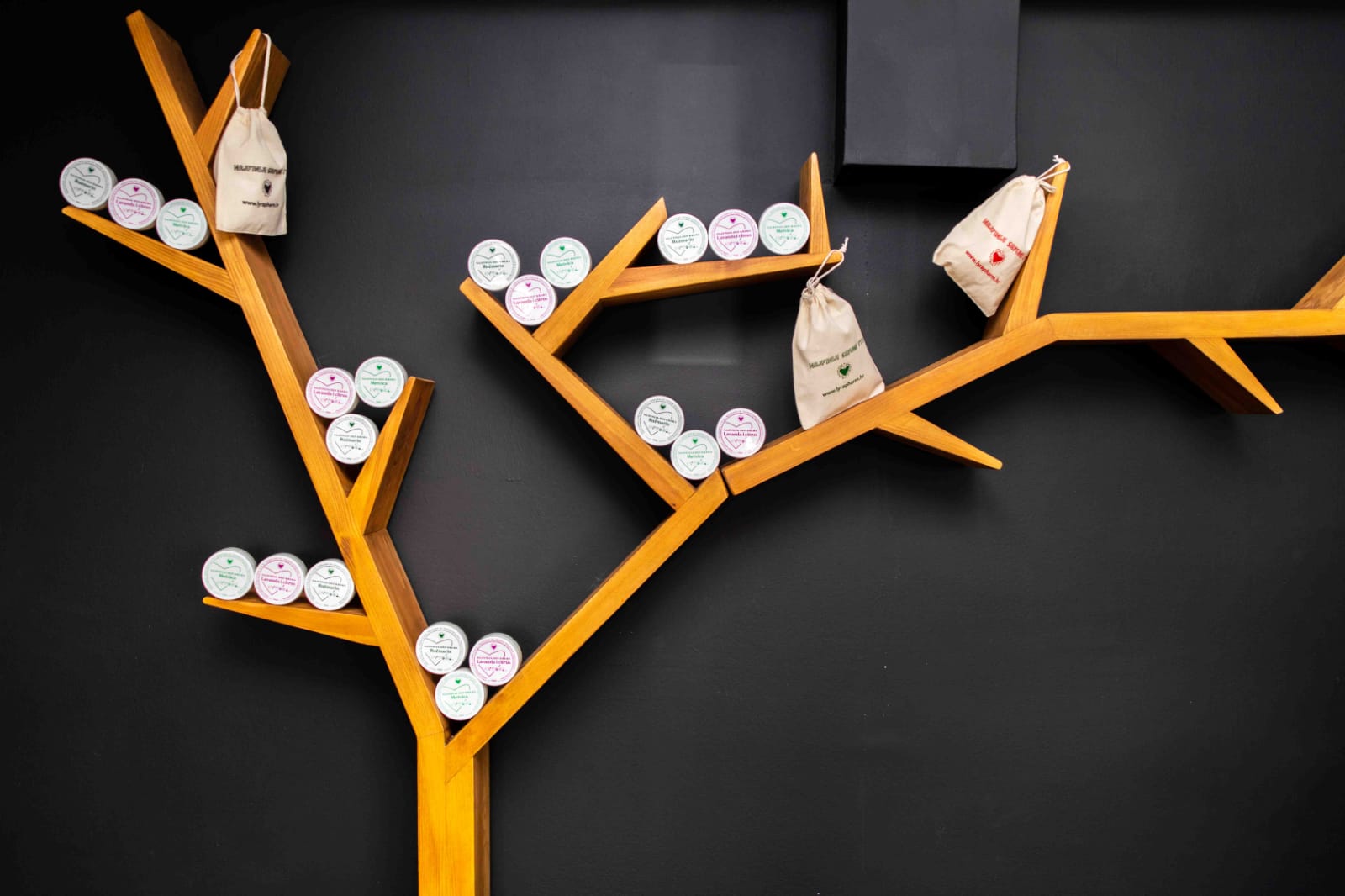
Najfiniji sapuni © Matej Paluh
Do you have a message for the youth or maybe adults who would like to start something similar one day?
Our cosmetics are used by people ages 9 to 99 years. Women and men are equally represented, which we are happy about. People have recognized the benefits of such products. Anyone who wants to embark on a story like this must first know exactly what they want to produce. Furthermore, they have to be educated because, without knowledge, there is nothing. They also have to be ready for one big battle with bureaucracy. And now that they have set it all up like that and decided they have to know nothing happens overnight. It takes over half a year of effort and financial resources for a product to appear on a shelf and be ready for the consumer. Nothing will go smoothly right away, but when you succeed and see your product in someone’s hands - it’s a reward for everyone.
For the latest travel info, bookmark our main travel info article, which is updated daily.
Read the Croatian Travel Update in your language - now available in 24 languages.
Join the Total Croatia Travel INFO Viber community.
Kvarner Bay - Where the Mediterranean Meets Vienna And Budapest
August 19, 2020 - If you thought that the entire Croatian coast is about easy-going life, with antique remnants and hot-blooded people who sing all the time under the olive oil tree - you haven’t seen Kvarner Gulf. Kvarner Gulf is also a Mediterranean region in the Adriatic sea and is somewhat similar to Dalmatia, but its culture is totally different. Think the Mediterranean with Austro-Hungarian moderation, diligence, and attention to details.
Kvarner Gulf is bordered by Tuscan-style Istria in the north, a petite arcadia of vineyards, lovely woods with truffles, pleasant coastal towns, beaches, and charming hamlets on the rolling hills. In the south, Kvarner Gulf borders Dalmatia, a region where natural beauties and amazing cultural heritage co-exist with architectural atrocities, traffic mess, and a dose of chaos here and there.
Between rustic Istria and hot-blooded Dalmatia, Kvarner lives its quaint, diligent, and neat life with tourism that was conceived in the glory days of the Austro-Hungarian Empire. In Dalmatia - there are ancient houses and entire towns made of stone and marble. In Kvarner, you will see narrow houses with colorful facades, villas from the belle epoque built as summer residences of a European aristocracy, and lovely houses of Kvarner’s captains with palms and exotic plants they brought from all over the world.
Dalmatia is pretty - for the most part. Yet, its turbulent history heavily influenced by the Ottoman Empire created a culture that sometimes misses keeping all things pretty, neat, and organized. This part of the Mediterranean inclines toward loud emotions that can slightly fog rational thinking, creating a charming dose of chaos and slothfulness (google: fjaka). And that’s why we love it.
Dalmatian chaos gave birth to amazing arts - klapa singing is beyond beautiful and the legendary Malo Misto TV series can stand side-by-side with Jirzi Menzel’s and Fellini’s depictions of small-town life.
But, if you want to experience another kind of Mediterranean - less dramatic and loud, visit Kvarner. The history of Kvarner was somewhat different than Dalmatian history - while Dalmatia was dealing with the attacks of the Ottoman empire, more civil rule of the Venice and Austria defined the largest part of Kvarner area, leaving good infrastructure and carefully tended gardens in front of the lovely houses lining the orderly streets of the neat colorful towns.
Colorful facades of Kvarner vs stone houses of Dalmatia
Opatija
The city of Opatija is pretty similar to Montreux - big fancy, belle epoque houses with lush gardens, parks, and promenades were built as summer residences of European aristocracy. Instead of the Geneva lake, there is an Adriatic sea and lots of palms, but the experience is quite alike. Fancy hotels and restaurants serve the high-class clientele that loves the buzz of luxury and style. Both boast nostalgic scenery of the Charleston age.
Photo by Romulic and Stojcic
Rijeka
Rijeka used to be a Habsburg and Hungarian port from the late 17th century, competing with Austria’s imperial port of Trieste.
And you know ports - they tend to be open-minded, mild-tempered, liberal and outgoing - especially if we are talking about Habsburg ports at the peak of the Empire’s power and ambition.
Rijeka’s historical buildings remind a bit of Vienna or Graz, and its heritage doesn’t have so much to do with the Romans, battles with Ottomans, fortifications, and towers like in Split, as with the industrial revolution, transportation made in the 19th century and the efforts of Austrian and Hungarian empires to spread their influence from Rijeka to the rest of the world.
When you compare the mindset of Rijeka and the big Dalmatian port of Split, you will notice a more conservative, right-wing way of thinking in Split and a more left, open-minded atmosphere in Rijeka. If you are a young woman looking to find a partner to support you in your career, you might want to look for a guy from Rijeka. And if you'd like to find a tall, dark, handsome and macho man, definitely head towards Split. But, don’t expect him to cook for you or do laundry. In Split, they take good care not to risk masculinity as it, as they believe, dissipates when in touch with kitchen utensils, the vacuum cleaner or laundry detergent.
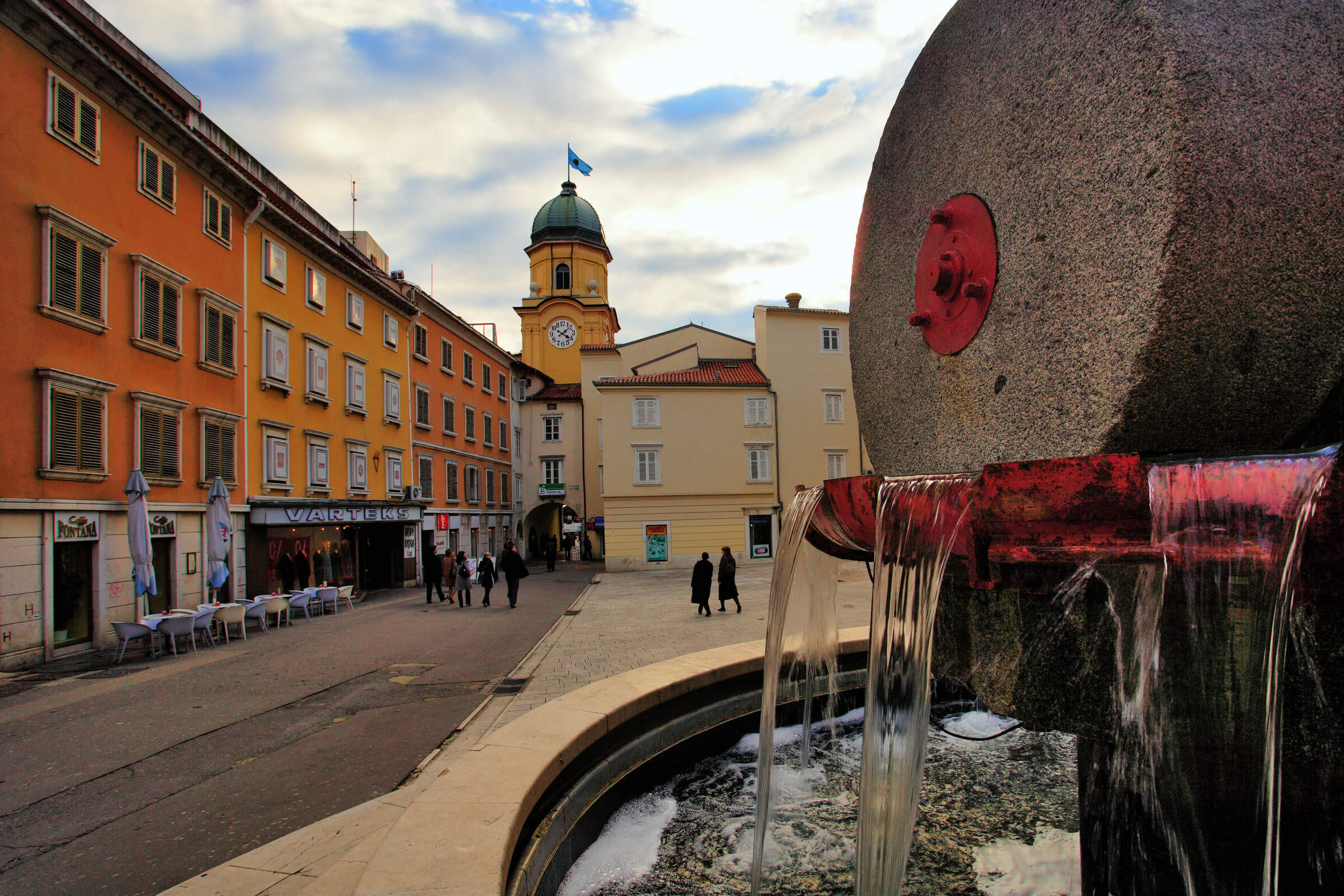
Photo by Romulic and Stojcic
Lošinj Island
Lošinj is incredibly beautiful - and not only for its lovely nature and historic heritage from the 19th and 20th century - it is as neat and tidy as if some Swiss people come regularly to tidy it up. All the houses have colorful facades, neat gardens and clean streets - unlike Dalmatia, Lošinj and Kvarner love it orderly.
No saddening and confusing architectural atrocities that attack the idyllic Mediterranean towns and bays in Dalmatia. People of Lošinj protect its cultural and natural heritage by their architectural choices, keeping in mind that prosperous tourism is not about quantity, but foremost - quality.
A bit of smart strategic planning executed by top brand destination managers, based on a long tradition of Lošinj health tourism, and a bit of ratio driven thinking resulted in sustainable tourism that is equally attractive to inhabitants and tourists. Lošinj people find it a bit funny when their Dalmatian neighbours build a zillion clubs, attract all the partygoers of Europe and then whine because drunk, pissing and vomiting youth wander across amazingly nice Renaissance streets. I mean, duh?! What was the plan - open all those clubs and then organize baroque music festivals for the rich European aristocracy in them?
Lošinj is branded as an “Island of Vitality” - and this well-throughout tourism direction prevented mass and party-oriented tourism. It is that simple. Have a strategy, derive a plan from it and then stick to it as much as possible. No clubs, no club-goers. It's not quite rocket science, right?
High-end tourists are happy - they come to enjoy a great climate and recover in fancy wellness programs, truly untouched nature, top hotels and restaurants, and inhabitants are reasonably happy, since this type of tourism doesn’t interfere with the values and a tranquil lifestyle of inhabitants.
Of course, there are always people who are not happy with this or that, but they do not express their opinions by uncontrollable usage of concrete or undermining the overall developmental strategy - no Dalmatian-style “dišpet” (resistance with passionate attitude) here. A bit of nagging and some fine-developed art of gossiping, that’s all.
Is Lošinj an example of a series of fortunate events? I wouldn’t say so - it is about mindset, shaped by the Italian and Austrian influences that cooled the Mediterranean blood to more moderate temperatures and weeded out instant gratification of fjaka by offering some more sophisticated ways to be.
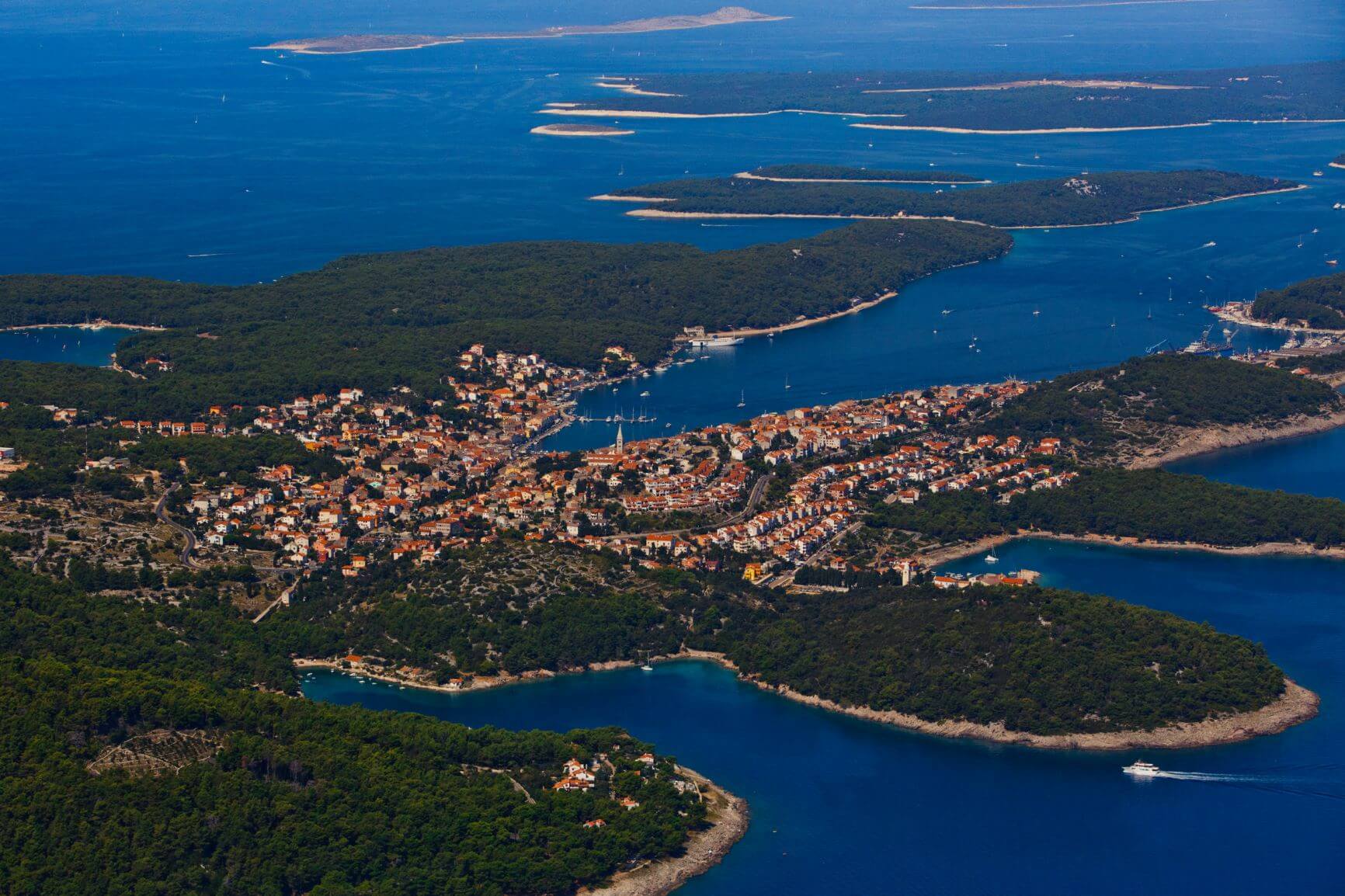
Photo by Romulic and Stojcic
Cres
Cres is something special - experts would say it is touristically underdeveloped, but that is exactly the reason to visit it. It has several tourist hubs (Martinščica, Cres, Punta Križa) - but the rest of it is beautifully left alone. It is an island of stunning hamlets with perfect beaches down the hill, dramatic cliffs and minimalistic type of Mediterranean vegetation - large areas are covered only by aromatic plants and a shrub here and there.
It is a place to enjoy meditative walks, soak up the beauty of the Adriatic looking at it from above and visit the villages that look like they did when your great-grandma first noticed your great grandfather.
Photo by Romulic and Stojcic
Krk
Is it still an island if it has a bridge? Maybe it is, maybe it isn’t, but thanks to the bridge, Krk is way more easily reachable and therefore a bit busier than Lošinj and Cres islands. Still, it is not crowded and besides historic towns with many restaurants and touristy buzzes, such as Krk or Malinska, it offers numerous quaint villages and secluded bays to rest and enjoy.
Here you can enjoy the best of tourism, some nice history, great food and lots of tranquility and untouched beauty.
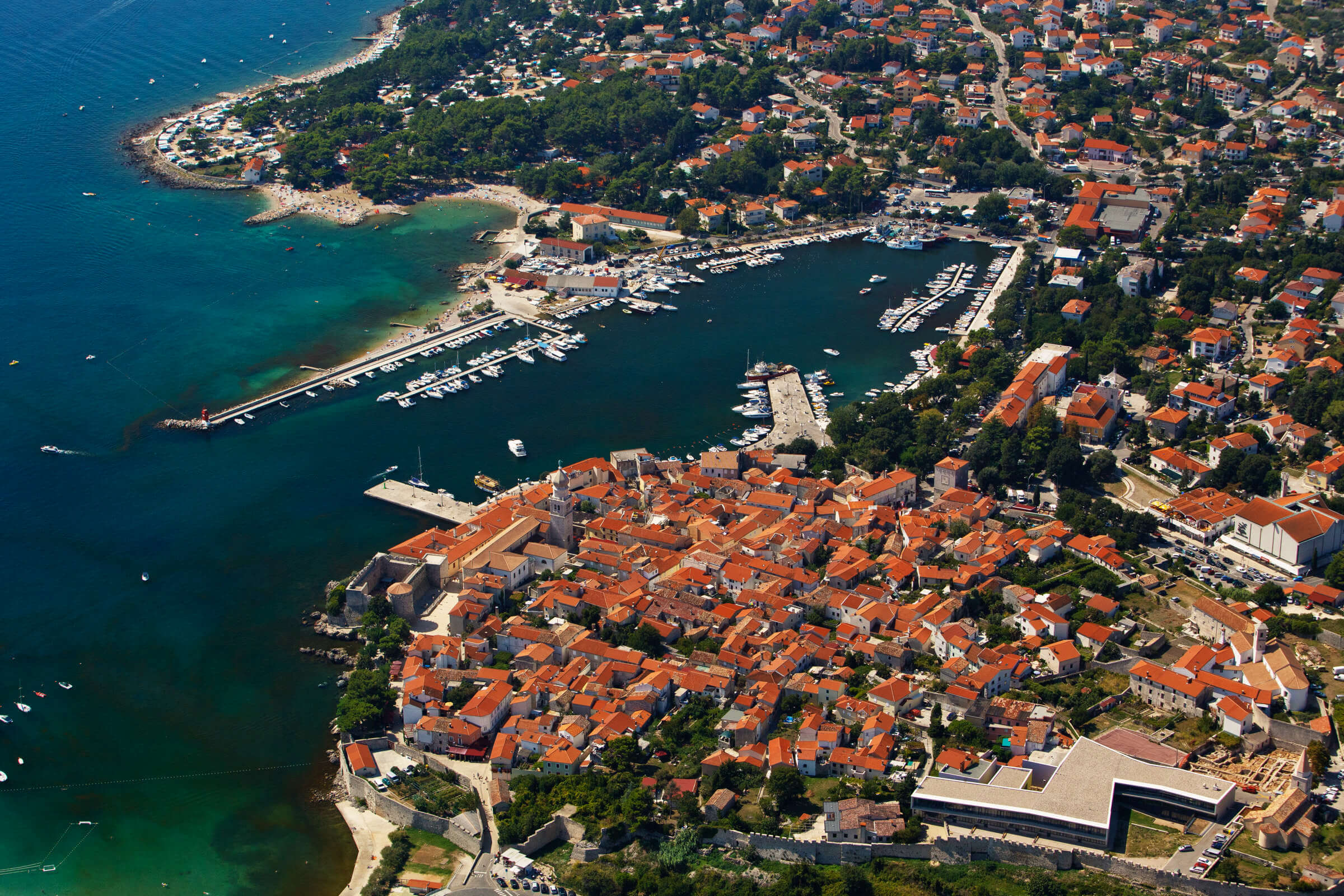
Photo by Romulic and Stojcic
Rab
Rab is a beautiful and diverse island, one of those fairly well-developed tourist destinations, that have everything you dream about when you plan your vacation. There are long sandy beaches with many things to do, tasteful restaurants, great facilities, and fun event Rapska fjera that brings you back to Rab’s Middle Ages.
But, Rab is not a victim of overtourism, no chaotic crowds, or devastation of nature. Rab is a moderate and smart destination, just like the rest of the Kvarner. With long sandy beaches and deep shades of pine trees, the southern part of the island is a picture-perfect family destination. Laid back, yet tidy and very comfortable.
In the middle of the island, protected from the winds and the cold, is a peasant paradise, a large area rich with fertile soil. Ripe tomatoes, delicious peppers, figs, grapes, sage, and rosemary grow in the heart of the heart-shaped island Rab.
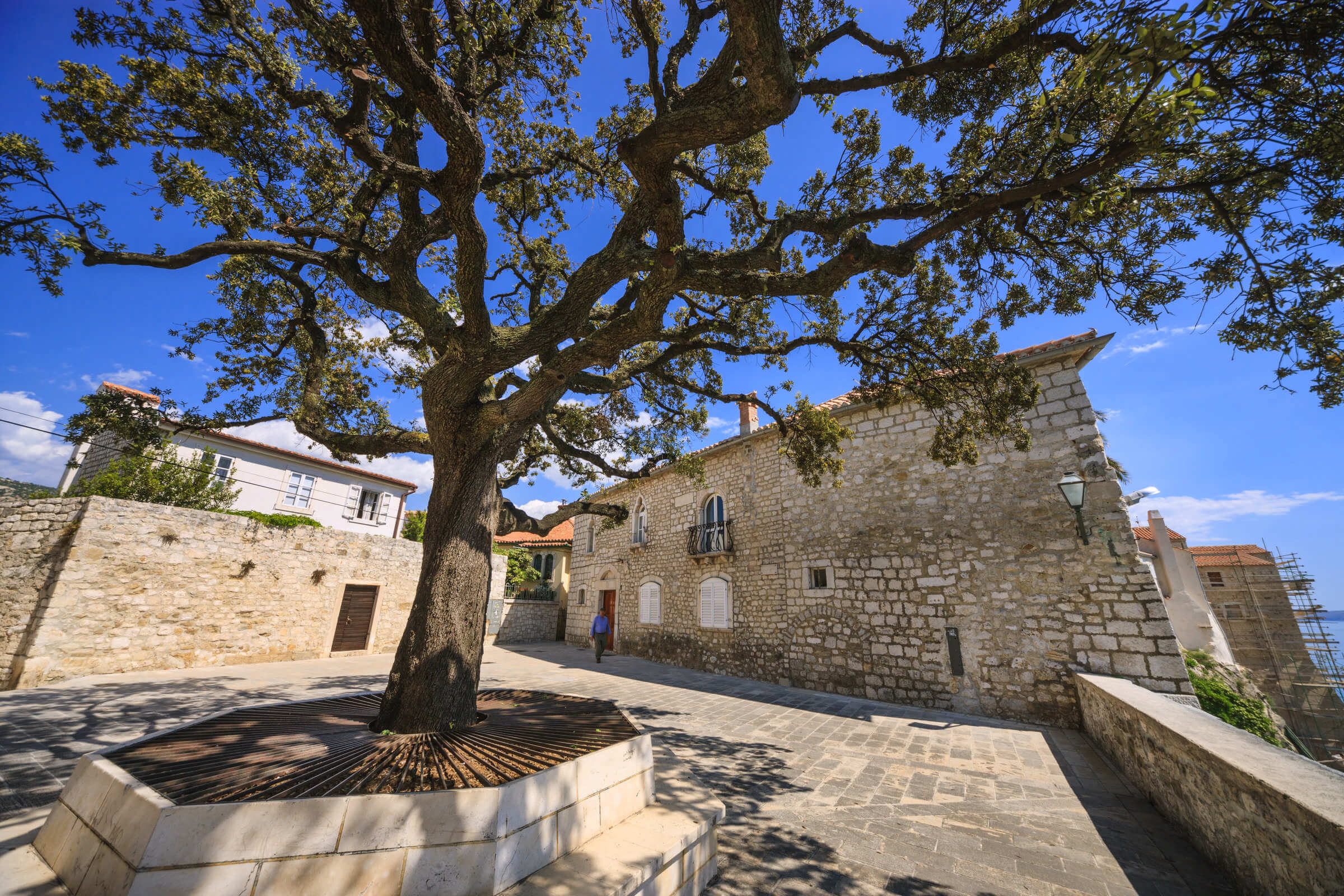
Photo by Romulic and Stojcic
And the bonus - one of a kind Susak island and arcadia of Unije
Besides two nice towns and four big islands, Kvarner also boasts more than a few islets. Many of them are just incredibly beautiful places to anchor your yacht and enjoy absolute privacy of the intact nature, but Susak and Unije are more than that.
Susak is a geological mystery - an island with fine white sands looks as if it was accidentally misplaced somewhere from Africa to a stony Kvarner. Nothing here looks like the rest of the Kvarner. Long beaches with shallow waters are a thrill for kids and beachgoers enjoy lazing around.
This small isolated island basically invented mini skirts which are a part of their idiosyncratic folk costume. They had no problems with showing women’s legs Urbi et Orbi centuries ago, unlike the rest of Europe. Vibrant red and pink colors of multilayered mini-skirt, worn with equally colorful pink or red socks really surprise you, posing a question - how on Earth did this folk costume develop? Maybe it fell from another Universe, just like the island itself. Older ladies wear these mini-skirts too but in black. And even in the present days, it is not unusual to see granny walking around in her lovely multilayered mini-skirt.
Unije island is a paradise in the middle of nowhere - its village attracted some cool people from all over Europe who bought summer houses there to enjoy mini-paradise away from everything. Unije are sort of arcadia - Kvarner life at its best. Cultured oasis of people who just want to enjoy the best of life, without unstable sinusoidal emotions of pisma (singing), dišpet or fjaka, trademarks of Dalmatian mentality. More like a dream come true of Italian renaissance poets.
Some people will say that in terms of nature and the sea Dalmatia is more beautiful than Kvarner. Although it is only maybe partially true, Kvarner is like that neighbor that is always kind, polite, does no harm, ready to help, light-spirited, and friendly. Dalmatia is like that charming, tall, dark guy that awes and charms, but is not maybe the most polite and reliable guy in the neighborhood.
So, take time to experience both sides of the Croatian coast, Kvarner Yin and Dalmatian yang.
For the latest travel info, bookmark our main travel info article, which is updated daily.
Read the Croatian Travel Update in your language - now available in 24 languages
HUT: Croatian Coast Safest in Mediterranean Considering COVID-19
ZAGREB, July 27, 2020 - In the last 24 hours there have been five new cases of infection with COVID-19 along the Croatian Adriatic coast, and this is the safest destination for guests from the European Union in the Mediterranean region, the Croatian Association of Tourism (HUT) stated on Monday.
From the area from Istria to the southernmost Croatian city of Dubrovnik, there are about 1.4 million inhabitants, and statistics show that there are only 0.357 newly diagnosed cases per 100,000 inhabitants in the coastal region, HUT explains.
If one takes into consideration that there are also an estimated 700,000 guests vacationing in the Croatian coastal region, the situation can be depicted in more favourable figures: 0.238 new cases per 100,000 people.
HUT has recently launched the Corona Region Tracker which shows that COVID incidence along the whole coast is declining.
As Croatia Raises Prices, Nautical Tourism Turns to Greece and Turkey
As Morski writes on the 19th of April, 2019, Croatia's nautical tourism season has already started, beginning about a month ago and lasts the longest of all, for about eight months in total. What can be expected this season and whether or not the Greeks have taken away part of what would have been Croatian guests due to the Greek state's measures, are just a couple of the issues that Robert Pende, an assistant in the Croatian Ministry of Tourism, Roko Vuletić, the president of HUP's nautical sector and the Croatian Chamber of Commerce's Sean Lisjak discussed on HTV's "Good morning, Croatia" show.
Robert Pende stated the nautical season has just begun, and so far we have room to be satisfied and we can expect the season to be on the same level as last year.
Vuletić said that according to field information, the data isn't so great.
"We're the leaders in the world in one segment of nautical tourism, and that's renting a boat without a crew. We're receiving information from our colleagues who have charter agencies that some existing reservations have been canceled due to Croatia's price increases, which has been a big trend in recent years, although charter agencies raised their prices the least, given the growth of offers and competition,'' said Vuletić.
He added that guests are increasingly looking for package deals and that there are less and less classic nautical guests - they're wanting to have a whole package, from airline transfers, accommodation, gastronomic offers, and all of that has increased in price, including in marinas.
''In combination with the announced recession, people are becoming more cautious about what they're spending, they want to go to new destinations, and Greece and Turkey are growing rapidly,'' he said.
Lisjak said he was not afraid about people cancelling their reservations, he stated that Croatia's nautical tourism sector is a vigorous activity and in the last fifteen years Croatia has had continuity. He added that Croatia needs to be careful because new markets are opening their doors that have recently been avoided for security and various other reasons. He added that believes that if Croatia manages to accomplish last year's results despite all of that, then it can be satisfied.
He said that Croatia made 860 billion kuna from tourism last year and added that a way should be found to allow existing investors to invest in marinas.
He noted that a certain drop in transit has been recorded with the aforementioned Croatian price increases, adding that Croatia does have to be careful with its pricing policy and that the country needs to focus on being as competitive as possible.
Vuletić believes that boosting advertising activities on new markets needs to be done. Austria, Germany, Slovenia, Slovakia and the Czech Republic are Croatia's traditional markets, and the country should turn to the growing American or Scandinavian market, reports HRT.
Make sure to follow our dedicated lifestyle page for much more. Interested in learning more about sailing in Croatia? Give Total Croatia Sailing a follow.
Mediterranean Fair of Healthy Food, Medicinal Herbs and Green Enterpreunership to Start
Mediterranean Fair of Healthy Food, Medicinal Herbs and Green Enterpreunership will be held again this year in the period between 14th and 17th of March in Hotel Tirena in Dubrovnik.
One of the facts which give Croatia a lot of advantage is its location: being located right on the border of continental and Mediterranean climates enables the production of top quality medicinal plants and organic food.
That's why, in 2004, a fair which was supposed to attract producers from all over Croatia and neighboring countries was started in Dubrovnik, and it has grown substantially in previous years, to now become one of the leading such gatherings of producers of healthy foods and medicinal plants and herbs in the region.The fair is organized with several goals in mind, which include raising consciousness of the importance of producing and consuming healthier foods, ecological standards in the food production, sustainable development, and balance between the nature, economy and people. Those goals are achieved each year through education in lectures, workshops, round tables and scientific congress meetings. To promote higher quality of exhibitors’ presentations and ecological products, the organizers have established rewards for the best presentation, the best product, the best herbal product, and contribution for promotion of eco–economy in Croatia.
Each year, organisations participating in the fair include the Ministry of Economy, Ministry of Agriculture, Ministry of Tourism, Croatian National Tourist Board, Croatian Chamber of Commerce, Croatian Chamber of Trades and Crafts, Dubrovnik–Neretva County and City of Dubrovnik. In addition to those institutional participants, numerous leading Croatian and international scientists and reputable producers in the field have confirmed their attendance at the fair.
So, if you are in any way interested in activities aimed to promote sustainable development and healthy way of living by using ecologically acceptable products, you should consider going to Babin Kuk and Dubrovnik for the Mediterranean Fair, as it is probably the best place in Croatia to learn more about the healthy foods production in the Mediterranean region.


